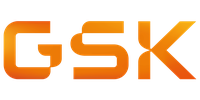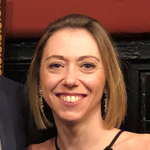Ondrej Slama
VIStA - Visualizing Images with Statistical Analyses.
In ophthalmology, but also in other areas, there is a growing need to promptly analyze non-standard clinical tabular data. This often includes imaging data with different imaging modalities. Visualizing Images with Statistical Analyses, or VIStA, is a framework that includes guidelines and template code to create interactive exploratory tools and analysis figures that relate clinical and/or imaging features with the underlying images. Our current use cases consist of analytical apps based mostly in R shiny, but special use cases also include JS, CSS, and Python. Our vision is to create a unified approach to use statistical analyses and analytical tools for data scientists or TA teams requiring interactive image visualization functionality.
Yilong Zhang
R-based test submission to FDA.
On 22 November 2021, the R Consortium R Submissions Working Group successfully submitted an R-based test submission package through the FDA eCTD gateway. FDA staff were able to reproduce the numerical results.
This submission, an example package following eCTD specifications, included a proprietary R package, R scripts for analysis, R-based analysis data reviewer guide, and other required eCTD components.
To our knowledge, this is the first publicly available R-based or open-source-language-based FDA submission package. We hope that our materials and what we learned can serve as a good reference for future R-based regulatory submissions from different sponsors.
To bring an experimental clinical product to market, electronic submission of data, computer programs, and relevant documentation is required by health authority agencies from different countries. In the past, submissions have been mainly based on the SAS language. In recent years, the use of open-source languages, especially the R language, has become very popular in the pharmaceutical industry and research institutions. Although the health authorities accept submissions based on open-source programming languages, sponsors may be hesitant to conduct submissions using open-source languages due to a lack of working examples. Therefore, the R Consortium R Submissions Working Group aims to provide such examples as part of its focus on improving practices for R-based clinical trial regulatory submissions.
https://github.com/RConsortium/submissions-pilot1-to-fda
Monika Huhn
OneView – A Shiny app to unlock the full potential drug repositioning investigations.
Monika Huhn & Shameer Khader, Center for Artificial Intelligence, Data Science & Artificial Intelligence, R&D, AstraZeneca
In many clinical and pre-clinical projects, there is a need to connect biologists and clinicians with the data in a meaningful way. Data is often stored in repositories that are hard to access without programming knowledge or buried in a collection of unstructured and unconnected spreadsheets. R Shiny apps can often help us to bridge this gap and empower scientists to work with their data directly.
One of the Shiny apps we have developed in recent years is OneView, which brings together different data sources to accelerate drug repositioning investigations.
Drug repositioning is an area of growing interest in drug development that can accelerate the discovery of new treatment options to benefit patients worldwide. Briefly, drug repositioning refers to the systematic investigation of a novel disease indication for a drug molecule. Drug repositioning can be accelerated using various tools and technologies, including intelligent dashboards, data integration and human-in-the-loop machine learning.
The core data behind the OneView Shiny app are from an analysis comparing transcriptomic signatures of drug molecules with hundreds of disease transcriptomic signatures, creating connections between a compound and diseases based on an inverse correlation between the transcriptomic signatures. To fully understand the significance of the relationships, and find further evidence to substantiate them, OneView provides a dynamic dashboard enabling scientists to filter/search within the data, follow connections through multiple datasets, and provide meaningful interactive visualizations.












